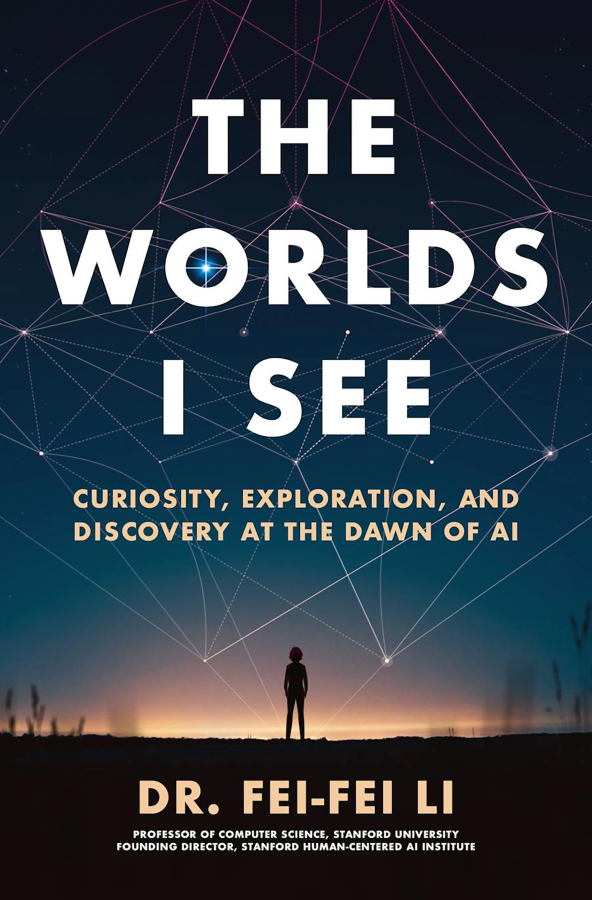“Your Face Belongs to Us” by Kashmir Hill
The human face’s romantic role as the “window” to our soul has a colder analogy for computer algorithms: just another kind of fingerprint. Kashmir Hill’s gripping book explains how a startup called Clearview AI brazenly scraped the internet to amass a database of billions of faces, then worked with dozens of police departments around the U.S. to create a hidden surveillance tool. Hill was the first reporter to identify Clearview’s sprawling network and lays out how the explosion of video doorbells and security cameras that can identify faces are turning our world into a panopticon, and a racist one at that. Facial-recognition software often isn’t trained to recognize the faces of Black people properly, and Hill shows the consequences in a terrifying chapter when Robert Julian-Borchak Williams is arrested in front of his family and jailed, all because of a flawed facial “match.” Even when the algorithms are near-perfect, as with Clearview’s, they aren’t designed with civil liberties in mind. Hill also lays out how Clearview founder Hoan Ton-That spent years aligning himself with far-right figures, many of whom would love to track the faces of undocumented immigrants in the United States. What it means to go “outside” is fundamentally changing, she writes — and not in a comforting direction. — Parmy Olson
“I, Robot” by Isaac Asimov
It’s an embarrassing admission, from a technology columnist in his mid-30s, to share that until this year, I had not read any of Isaac Asimov’s work. But, scolded by a peer and mindful that Asimov’s Three Laws of Robotics might fast become actual government policy, it seemed wise to quickly dive in. The short stories in “I, Robot,” a compendium released in 1950, dreamed up some of the questions that are very real today as we edge closer to creating so-called artificial general intelligence. Asimov’s laws — the first being that “a robot may not injure a human being or, through inaction, allow a human being to come to harm,” and the others stemming from that — seem straightforward but form the basis of plot lines that remind us today of the unpredictable ways in which smart robotics or AI could go wrong. Some 80 years after being written, the foresight holds up. Case in point: If you weren’t told otherwise, you’d think Asimov himself had written the recent discussions around ChatGPT becoming “lazier” in December because it learned that humans did less work around Christmas. — Dave Lee
“Going Infinite” by Michael Lewis
The big takeaway from this book isn’t so much the story of Sam Bankman-Fried’s downfall but how a man with obvious signs of narcissism and deception could charm one of the smartest journalists on the business beat. Michael Lewis is best known for poking holes in the stories of smarmy traders, but he paints a strangely sympathetic portrait of Bankman-Fried in “Going Infinite,” flicking at rude acts like playing video games in the middle Zoom meetings or mistreating his girlfriend as a feature and not a bug. Lewis’ neglect of Bankman-Fried’s flaws gets egregious when he describes the young savant’s attitude toward investors in his fund. Relegated to a footnote (a footnote!) is the startling admission from Bankman-Fried that he would have answered a different question or “made a word salad” if any of his investors asked about the risk engine at the core of his trading fund and where all their money was. To get some insight into how “tech bros” like Mark Zuckerberg and Elon Musk are able to maintain a network of powerful supporters despite their bad behavior, read this book. — Parmy Olson
“Blood in the Machine” by Brian Merchant
The Luddites have been given a bad rap, Brian Merchant writes in his meticulous and entertaining origin story of the famous anti-tech movement. Except, as he explains, it wasn’t really anti-tech at all. The Luddites were protesting exploitation, not machines — taking a hammer to equipment was just the means to an end. And what an end! The Luddites’ achievements are vast and can be keenly felt today: The workers marauding through Nottingham in the 19th century are not all that different from the striking Hollywood actors demanding studios offer promises not to replace their talent with AI. Merchant, a Los Angeles Times columnist, explores how the Luddites gave us the techniques and the lexicon to assemble against greed and power. The parallels are clear: Understanding how Britain’s working class was driven to extreme measures is the first step in preparing for what comes next. — Dave Lee



